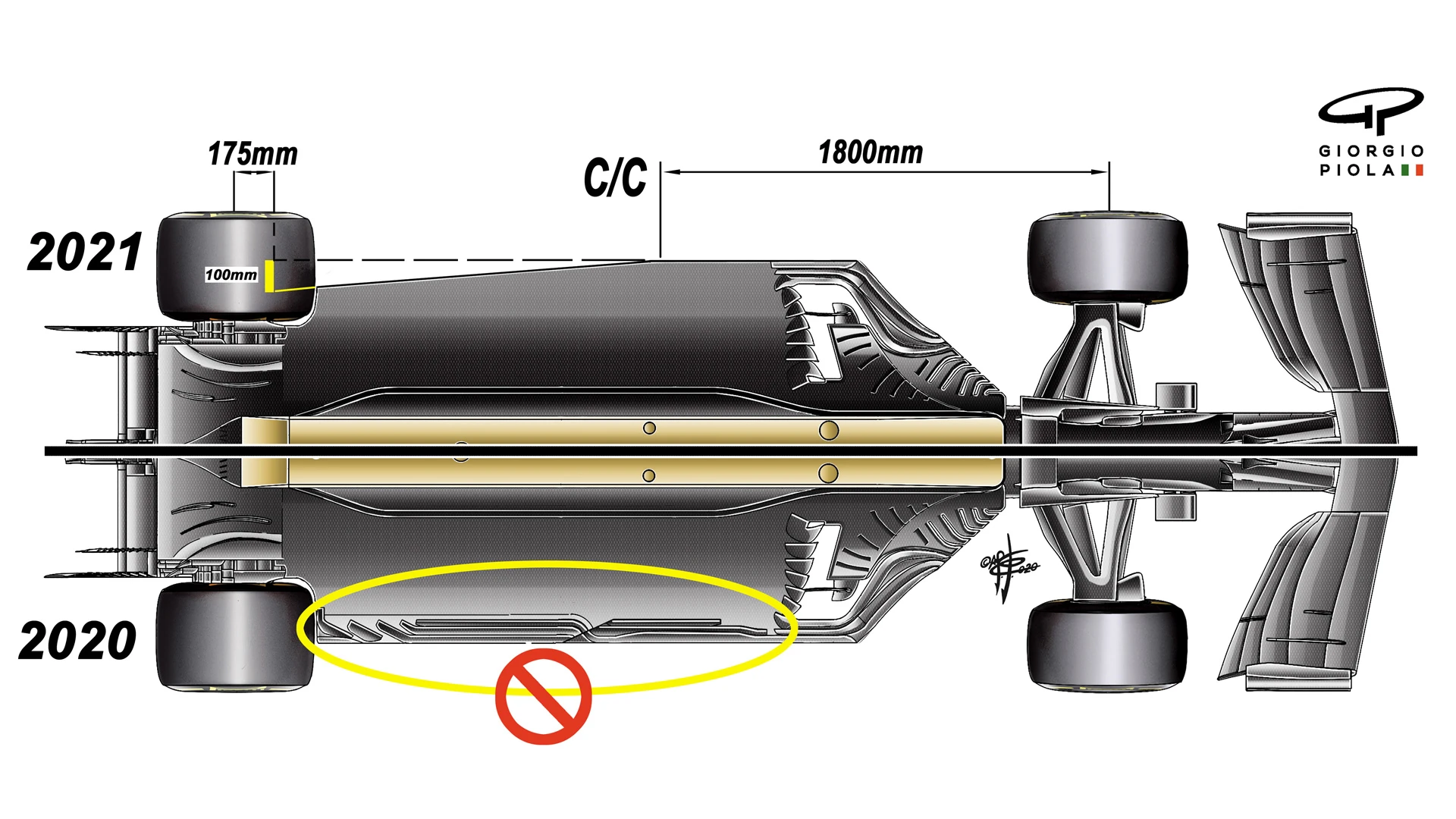TECH TUESDAY: What exactly are the revised 2021 aero regs – and will they shake up the order?


With Formula 1's radical rules overhaul having been pushed back to 2022, the 10 teams will be required to run their current cars next season as well – though they won't be exactly the same. The FIA recently announced further measures to trim downforce off the cars for 2021, in addition to those already confirmed earlier in the year. In this week's Tech Tuesday, Mark Hughes explains exactly what those measures will mean for the cars, with technical drawings from Giorgio Piola.
What exactly do the new regs stipulate?
In addition to the reduction in width of the floor from 1800mm back from the front axle, the floor slots have also been removed as part of the FIA's move to reduce downforce for 2021. The downforce generated by the underbody is a function of its plan area and the air pressure difference beneath the floor with that above it.
The diagonal cut to the floor reduces its plan area and the removal of the slots will reduce the pressure differential.

The longitudinal slots are used to create vortices at the underfloor’s edges to act as a virtual skirt, sealing off the floor and preventing the airflow escaping and having untreated airflow being sucked into the underfloor.
The lateral slats ahead of the rear tyres are more about creating a better pressure regime for the flow around the diffuser otherwise disturbed by the rotating rear tyres.
In addition to the floor changes, the winglets on the rear brake ducts, which create downforce that is fed directly to the wheels and is therefore very efficient, have been limited to 40mm (as seen on the lower part of the drawing beneath the red dotted line, in contrast to the current size winglets above the line).

The final change is to the diffuser fences, which have had 50mm chopped from their lower extremities (as you can see in the image below). They therefore will not seal the diffuser as effectively, further reducing the underfloor’s effectiveness.
Together it is estimated these changes will account for a downforce reduction of around 10% from current levels. It has been done in reaction to the downforce gains already made and those anticipated with development, while the tyres remain the same in specification in the final year of this size of wheel and tyre, before the switch to 18-inch tyres in 2022.

Keeping the rear tyres from being overloaded should allow them to be more raceable and not force Pirelli into specifying very restrictive pressure and camber limits.
Will the revised regs have any impact on the current competitive order?
The changes might conceivably help those teams currently suffering a less efficient aero performance than the best, as the underfloor is by far the most efficient way of creating downforce.
Reducing the efficiency of everyone’s underfloor could result in the best-performing teams losing more, perhaps allowing those behind to close up the gap.
More Tech Tuesdays
A close look at the ‘experimental’ new nose McLaren tested at Mugello
F1’s latest race-winning car is AlphaTauri's AT01 – but how similar is it to the 2019 Red Bull?
A look at the W11 upgrades that show how hard Mercedes are pushing to stay ahead
What does the 2021 aero rules change mean for the cars – and which teams will it hurt most?
The Mugello updates that show Racing Point's RP20 is moving away from its Mercedes W10 inspiration
Next Up
Related Articles
 ‘I hated this car at times’ – Verstappen on his 2025 season
‘I hated this car at times’ – Verstappen on his 2025 season Ferrari confirm launch date for 2026 campaign
Ferrari confirm launch date for 2026 campaign Formula 1’s record-breaking 2025 season in numbers
Formula 1’s record-breaking 2025 season in numbers ExclusiveHow APXGP was brought to life by costume designer Julian Day
ExclusiveHow APXGP was brought to life by costume designer Julian Day Lindblad's car number confirmed for rookie season
Lindblad's car number confirmed for rookie season Stroll opens up on 'noise' that has followed him in F1
Stroll opens up on 'noise' that has followed him in F1